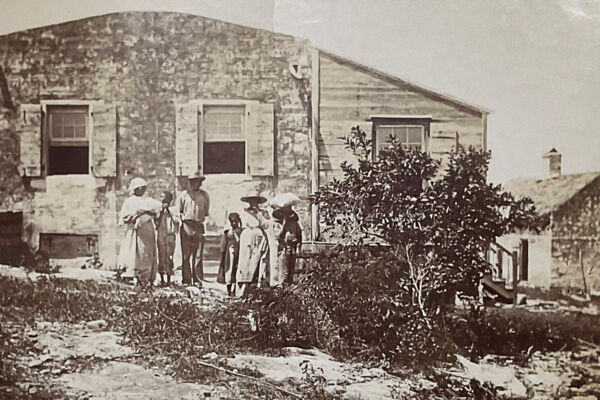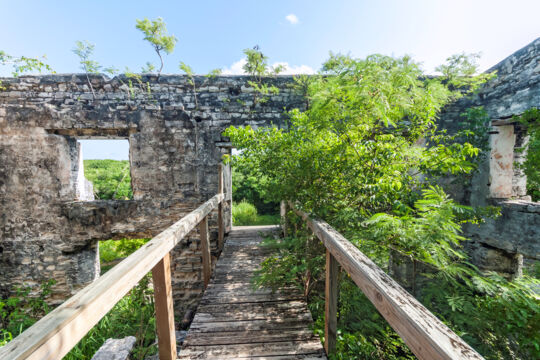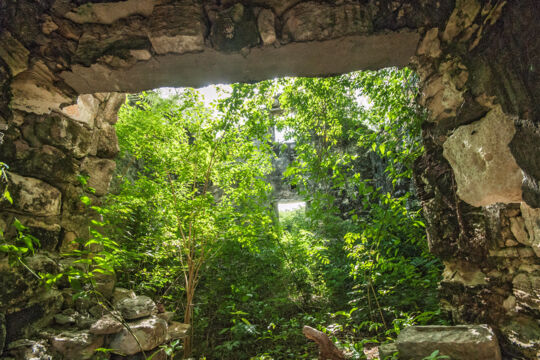Wade's Green Plantation
Kew, North Caicos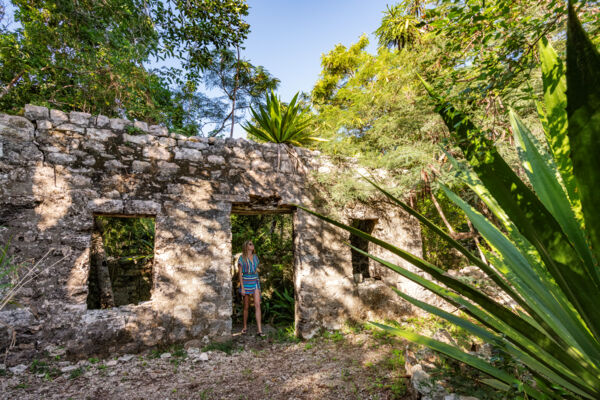
Wade’s Green Plantation is the best-preserved historical agricultural site in the Turks and Caicos Islands and is a fascinating attraction to experience when visiting North Caicos. It’s recommended that you visit this historical ruin if you have the time.
The plantation is about a six-minute drive from the North Caicos Ferry terminal at Bellefield Landing.
Visiting and Admission
Wade’s Green Plantation historical site is managed by the Turks and Caicos National Trust and is typically open on weekdays from 9:00 AM–3:00 PM Monday through Saturday.
Admission and the 30-minute tour are $15 per person.
Tickets are available for purchase onsite at Wade's Green, or at the TCI National Trust office nearby in the village of Kew. There are no restrooms onsite and no gift shop. A small guide booth is located near the entrance. It's recommended to call ahead before visiting to ensure there is a tour guide onsite.
For inquiries, information, and Sunday visits, contact the North Caicos branch of the Turks and Caicos National Trust at +1 (649) 232 6284 or +1 (649) 245 2095.
History
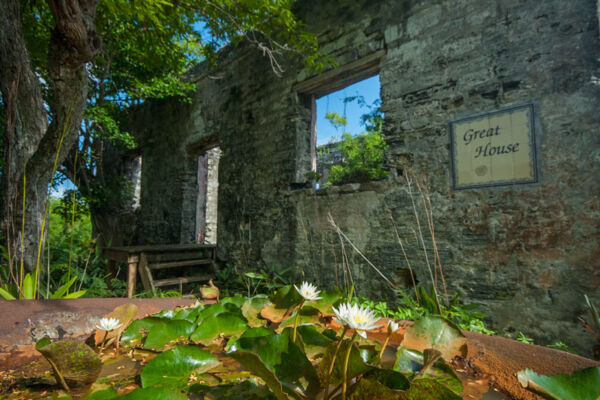
Wade’s Green was established as a cotton plantation by Loyalist Wade Stubbs in 1789. The land was granted to Wade Stubbs by then-reigning monarch of Britain King George III as compensation for losses incurred during the American War of Independence.
During the plantation era, slavery was legal in British territories. Many of the plantations in the British West Indies were worked by slave labor, and Wade’s Green was no exception. Records show that the first slaves in the Turks and Caicos were African slaves brought over from Bermuda in the later 1700s, and that the majority of subsequent slaves came with British Loyalists from America after the revolution. In 1834, the Slavery Abolition Act was made law by British Parliament and slavery became illegal in most British territories, including the British West Indies. The descendants of these slaves make up the core of the native Turks and Caicos Islanders.
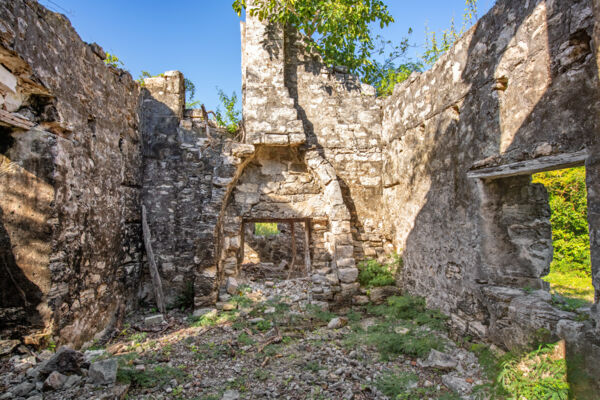
Wade Stubbs went on to become probably the most successful planter in Turks and Caicos history. At the time of his death in 1822, he owned 384 slaves and over 8,000 acres (3,237 hectares) throughout the Caicos Islands, including Wade’s Green on North Caicos, Haulover Plantation on Middle Caicos, and Cheshire Hall on Providenciales.
Many buildings made up Wade’s Green Plantation, including the Great House, the kitchen, the overseer’s house, slave quarters, and storage buildings.
The plantation era in the Turks and Caicos began to come to an end in the 1820s due to soil degradation, plant diseases and insects, and changes in the world markets. Agriculture ceased to be the main supporting industry of the Caicos Islands.
The Kew Region of North Caicos
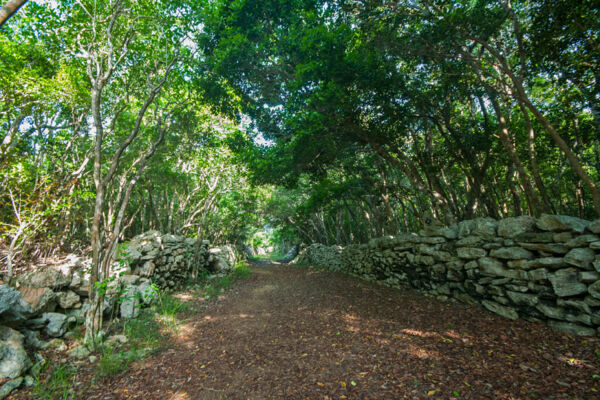
Wade’s Green Plantation is located near the settlement of Kew on North Caicos. This general region was the center of agriculture in the Turks and Caicos during the Loyalist days. Several other plantations were located nearby, including Teren Hill, Lewhy Moore Plantation, Mount Pleasant, Street Wall Plantation, and Saint James Hill.
As is evidenced by the present tropical dry forests, the Kew region also supports the best groundwater stocks in the country, with the water lens in places being over 20 feet (6 m) thick. These freshwater sources were essential to the plantations.
The Current Site
Up until the last decade, Wade’s Green was mostly reclaimed by the surrounding vegetation and only the main buildings were accessible. As the number of tourists to North Caicos increased, the plantation grounds received some much-needed attention. Currently, Wade’s Green is much more visitor-friendly, with unpaved paths leading through the ruins and tiled plaques identifying many of the buildings.

The grounds around Wade’s Green will also be of interest to natural historians. Examples of some of the plants traditionally grown in the Turks and Caicos can be seen along the paths, including cotton, sisal, and papaya. Yellow-crowned night herons, green herons, small lizards, and the unique and harmless Caicos dwarf boa are also commonly spotted around Wade’s Green Plantation.
The dirt paths around the ruins are generally smooth and in good condition, but a minimum level of fitness is required to navigate them, as the car parking area is a quarter of a mile (0.4 km) from the ruins.
The Great House at Wade’s Green has some modern wood access steps and a walkway. These fixtures are in disrepair and caution should be taken around them.
Mosquitoes can be bad at times, so consider bug repellent and long sleeves.

